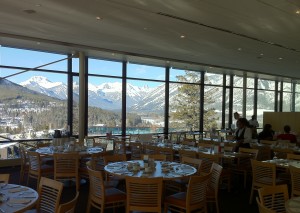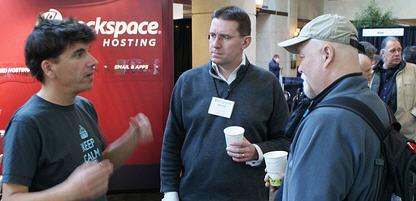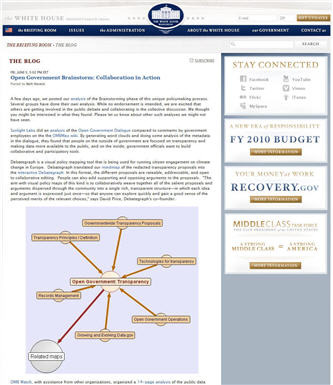Last month’s news that NBC News is launching its first eBook publishing division, may have raised a smile of recognition from Paul Peacock, an ePublishing industry pioneer who announced his ebook publishing company in The New York Times Book Review in June 1991.
Paul, a Debategraph Associate in New York, views Debategraph as an exemplar of a new and powerful form of electronic publishing that he calls dynamic information graphs (or “difographs”); a concept that he explores in the guest post, and embedded graph, below.
Future A for digital publishing (where the word “publishing” is used, loosely, to describe the process whereby “books” are made available to the public) is to take “books” and put them into electronic containers. But they remain siloed collections of information.
With websites and blogs we are able to use hypertext “links” to jump between two-dimensional knowledge collections (between “pages” on the same site or between sites). We are not able to show anything about the relationship between these collections or explicitly show information associated with the links (although the Google algorithm could presumably tell us a lot).
This is a half-step away from Future A but still leaves us swimming in the information flow as we try to make sense of it.
A difograph or dynamic information graph is a hub-and-spoke system of information presentation laid out in space with information encoded into the “spokes” (links) that join hubs together. It can exist in two or three dimensions. Information of all kinds and types can be attached to a particular hub (in a “panel”). The difograph gives us a net to drag through the river of information so that we, standing now on the bank, can more easily understand what we are looking at. Furthermore, difographs produced by different publishing entities can be linked together, creating seamless larger networks.
Difograph publishing is the Future B of digital publishing. The “hub” is its fundamental element in the way the “book” is for the print publishing industry.
A “view” is a presentation frame centered on a particular element of a difograph. The embedded view above can be embedded on your website by clicking on the Embed link in the top navigation bar (when you are in the Display mode you prefer) to get the appropriate code. It will update automatically as changes are made to it. debategraph.org/difographe is a short web address for the graph.







![Reblog this post [with Zemanta]](https://img.zemanta.com/reblog_e.png?x-id=c96fd920-9824-4bd0-9a88-895db173720b)

![Reblog this post [with Zemanta]](https://img.zemanta.com/reblog_e.png?x-id=651bee35-b798-453b-9dff-55e9c080dc0b)

![Reblog this post [with Zemanta]](https://img.zemanta.com/reblog_e.png?x-id=164da2cd-fa32-4b76-9061-418549788280)

![Reblog this post [with Zemanta]](https://img.zemanta.com/reblog_e.png?x-id=c36a0792-4b1b-4a6a-949b-0e1db9fdcf48)